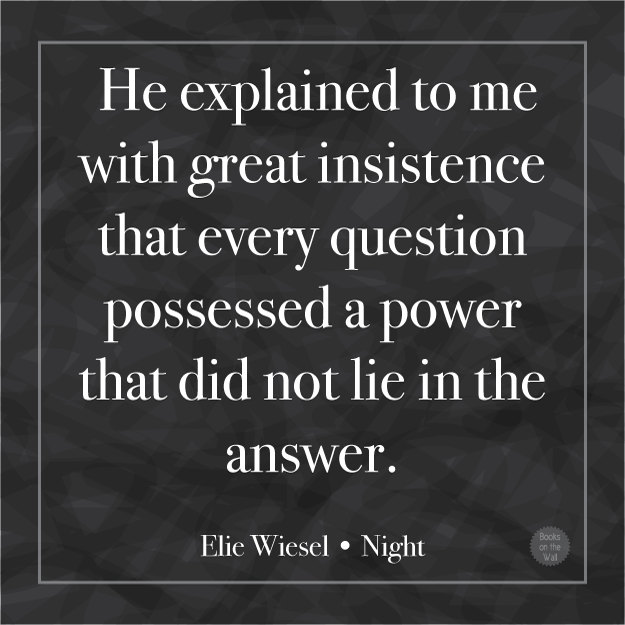Elie Wiesel in *Night*: A Testament to the Indelible Mark of the Holocaust

Elie Wiesel’s Night stands as a harrowing yet profoundly impactful testament to the horrors of the Holocaust. More than just a historical account, it’s a visceral exploration of faith, humanity, and the enduring power of memory. This unflinching memoir, initially published in French as La Nuit in 1958 and later translated into English, has cemented its place as a cornerstone of Holocaust literature, shaping the way generations understand this devastating chapter in human history. Its enduring resonance is evident in its continued relevance in classrooms, libraries, and cultural discourse, highlighting its profound literary merit and lasting impact. This essay will delve into various aspects of Night, examining its narrative structure, Wiesel’s writing style, the book’s educational value, its cultural influence, and its enduring legacy within the broader context of Holocaust literature available on Lbibinders.org.
The Narrative Power of Night: A Journey Through Darkness

Night is not merely a chronicle of events; it’s a deeply personal journey into the abyss of human suffering. The narrative unfolds chronologically, tracing Wiesel’s experience from his idyllic life in Sighet, Transylvania, to the unspeakable atrocities he endured in Auschwitz-Birkenau and Buchenwald. The stark simplicity of the prose belies the immense emotional weight it carries. Wiesel’s narrative voice is both childlike in its innocence and mature in its understanding of the profound implications of the events he describes. This duality reflects the abrupt transition from childhood to a confronting adulthood experienced in the face of unimaginable cruelty.
The narrative structure is remarkably effective in conveying the gradual erosion of faith and hope. Initially, Wiesel clings to his devout faith, searching for meaning and divine intervention in the midst of unimaginable suffering. However, as the horrors unfold, his faith is relentlessly tested, leading to a profound spiritual crisis. This internal struggle forms the emotional core of the narrative, rendering the external horrors even more impactful. The reader witnesses not just the physical brutality but also the internal disintegration of a young man’s belief system, forcing a confrontation with the implications of absolute evil. The gradual stripping away of humanity, both physical and spiritual, is masterfully portrayed, leaving a lasting impression on the reader.

The Dehumanization Process: A Systematic Depiction
Wiesel meticulously depicts the systematic dehumanization process inflicted upon the Jews by the Nazi regime. He doesn’t shy away from the brutal realities of starvation, disease, and violence. He describes the systematic stripping of possessions, the degradation of the human body, and the constant fear that pervaded the concentration camps. This detailed depiction serves not only as a historical record but also as a powerful condemnation of the inhumanity capable of humans. The descriptions are often shocking, intended to confront the reader with the full extent of the atrocities committed. The reader is made to feel a part of the experience, to share in the suffering of the victims, forcing a deep engagement and a necessary understanding.
The narrative also portrays the subtle yet crucial ways in which the prisoners attempted to maintain their humanity amidst the dehumanizing conditions. Acts of kindness, compassion, and resilience, however small, serve as poignant reminders of the enduring human spirit. These moments of grace, though fleeting, provide crucial counterpoints to the overwhelming darkness, offering glimmers of hope amidst the despair. This juxtaposition intensifies the impact of the narrative, underscoring the enduring strength of the human spirit even in the face of unimaginable suffering. These moments of humanity serve as powerful reminders of the importance of compassion and the need to fight against oppression, making the work relevant across generations.

Elie Wiesel’s Writing Style: Simplicity and Power
Wiesel’s writing style in Night is characterized by its stark simplicity and emotional intensity. He avoids flowery language or elaborate descriptions, opting instead for a direct and unadorned prose that powerfully conveys the horror of the experience. The simplicity of his language serves to amplify the emotional impact of his narrative, allowing the reader to fully absorb the sheer brutality and despair of the events described. The emotional weight of the narrative rests not on elaborate prose, but on the stark reality of the events themselves, conveyed with a powerful and poignant simplicity.
This simplicity, however, should not be mistaken for a lack of literary merit. Wiesel’s prose is masterfully crafted to create a powerful emotional response in the reader. The carefully chosen words, the deliberate pacing, and the understated tone all contribute to the overall effect of the narrative. The restrained emotionality amplifies the impact of the scenes of violence and suffering, allowing the reader to fully confront the grim realities of the Holocaust without resorting to sensationalism. This understated style, while stark, ensures that the trauma of the experience resonates deeply and persistently. His mastery of language is evident in his ability to convey the deepest emotions with the simplest of words, making Night a truly unforgettable reading experience.
The Enduring Legacy of Night: Impact and Significance
The publication of Night marked a pivotal moment in Holocaust literature. It helped to break the silence surrounding the atrocities committed during the Holocaust, prompting a global reckoning with the events of World War II and the enduring threat of genocide. The book’s unflinching portrayal of the horrors faced by the Jews forced a confrontation with the reality of the Holocaust, challenging denial and indifference. This courageous and honest account spurred further reflection on the nature of evil and the importance of remembering the past to prevent future atrocities.
The book’s impact extends far beyond its literary merits. It has become a staple in classrooms worldwide, serving as a vital educational tool for understanding the Holocaust. Its accessibility and powerful narrative make it ideal for engaging students and encouraging critical thinking about history, human rights, and the dangers of unchecked hatred and prejudice. Its inclusion in educational curricula worldwide demonstrates its lasting impact and enduring relevance. Lbibinders.org offers comprehensive resources and educational materials related to Night, facilitating deeper understanding of the text and its significance.
Night’s Educational Value and Life Lessons
Night offers invaluable educational insights, surpassing its role as simply a historical account. The text serves as a powerful lesson in empathy, demonstrating the profound consequences of hatred and prejudice. It compels readers to confront the horrors of the Holocaust and examine their own preconceptions about human behavior. The book provides a framework for understanding the fragility of human dignity and the importance of tolerance and respect for all individuals, regardless of background or beliefs. Moreover, it emphasizes the importance of remembering the past to prevent future atrocities, a key lesson for future generations.
The book’s enduring power stems from its ability to foster critical thinking and ethical reflection. It encourages readers to question authority, to challenge injustice, and to advocate for the rights of marginalized groups. The experiences detailed within its pages prompt readers to evaluate their own values and beliefs in relation to the events depicted. The text invites introspection and self-reflection, urging readers to confront their own prejudices and biases. This deeper engagement with the text enriches its educational value, transforming it from a historical narrative into a call to action. Lbibinders.org can provide supplementary resources, such as teacher guides and study materials, to further enhance the educational impact of the book.
The Cultural Impact of Night: A Global Phenomenon
The cultural impact of Night is undeniable. It has been translated into numerous languages, reaching a global audience and becoming a powerful symbol of remembrance and resistance. The book’s widespread popularity has led to numerous adaptations, including films, plays, and documentaries, further disseminating its message and ensuring its continued relevance. These adaptations, along with the countless discussions and analyses inspired by the book, have contributed to its status as a landmark work of Holocaust literature.
The book’s enduring popularity is also evidenced by its continued presence in classrooms and libraries globally. It remains a pivotal text in Holocaust education, shaping the understanding of this devastating period in history for generations of readers. The book’s lasting impact demonstrates its ability to connect with audiences across cultures and time periods, speaking to universal themes of humanity, survival, and the ongoing struggle against injustice. The extensive discussion and analysis surrounding Night on platforms like Lbibinders.org further showcase its profound influence on cultural discourse. The awards and accolades received by the book, as well as Elie Wiesel himself, solidify its place as a significant literary achievement.
Conclusion: The Unfading Light of Memory
Elie Wiesel’s Night is far more than a memoir; it’s a profound exploration of human resilience, the enduring power of memory, and the ongoing struggle against hatred and indifference. Its stark prose and unflinching portrayal of the Holocaust have ensured its lasting place in literature and continue to resonate with readers worldwide. Its educational value is immeasurable, offering vital lessons in empathy, tolerance, and the importance of remembering the past to prevent future atrocities. Its cultural impact is equally profound, cementing its status as a symbol of remembrance and resistance. Night remains a potent reminder of the dangers of unchecked hatred and the urgent need to fight for human dignity, a message that continues to resonate deeply in today’s world. The extensive resources and information available on Lbibinders.org offer further avenues for exploration and understanding of this crucial work and its ongoing legacy.